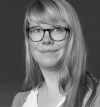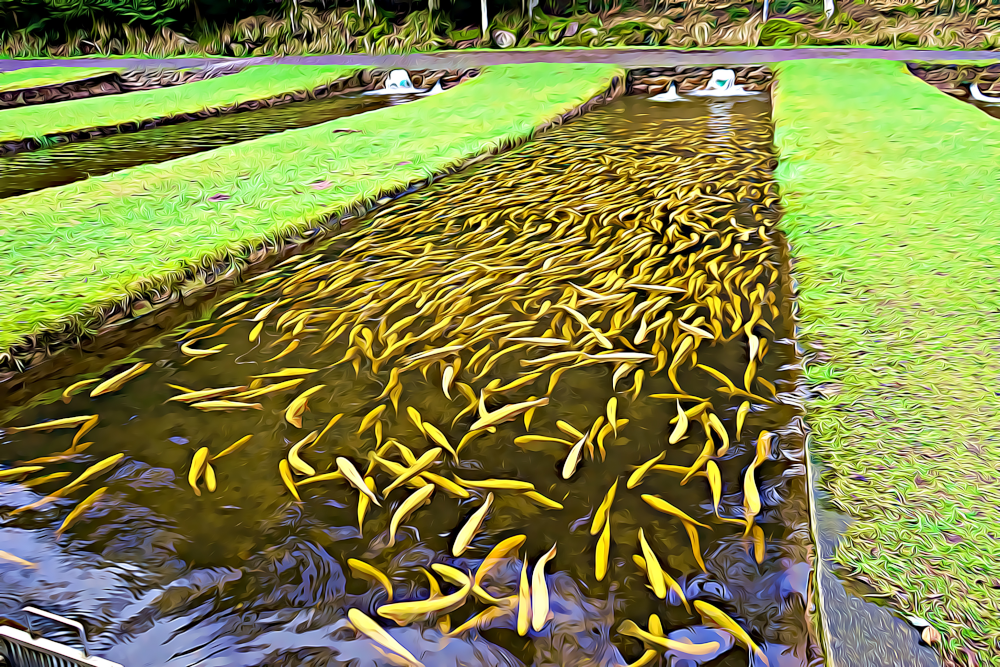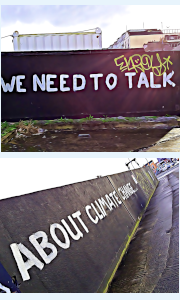|
Having trouble viewing this email? View it in your browser
|
|
June, 2020
|
|
Dear friends of agri benchmark Fish,
|

|
we hope you are all safe and sound in these times. The past months might have caused difficulties for the seafood sector as well as for planned field trips and data collection, but on the other hand may also open up opportunities like an increased awareness of the importance of regional production within the sector.
|
|
| Certainly, we have used the travel-free time to define new datasets, to finish projects and to start new ones. We are happy to present the interesting outcomes and upcoming work within our 5th edition of the agri benchmark Fish newsletter including news about the most recent typical German carp and trout farms, the definition of a typical brown shrimp vessel as a brand new agri benchmark Fish production system, the announcement of new exiting publications and results from international projects, and welcoming our new Austrian network partner, the JOANNEUM RESEARCH Forschungsgesellschaft mbH.
|
Enjoy your read and the summer!
Cornelia Kreiss
On behalf of the agri benchmark Fish Team
|
Filling up the map of Germany: New typical farms illustrating the diversity of the sector!
|
| What a productive spring it has been! The network of typical farms within the German aquaculture sector increased by 4!
|
| A total of 20 German fish producers and stakeholders joined fruitful focus group discussions hosted by the agri benchmark fish team in two of the most important German carp and trout production regions.
|
| For the first time the typical farm approach has been applied to carp production practices within the federal state of Saxony. The two new typical Saxonian carp farms DE-FCP-80 and DE-FCP-200 build now a very important expansion of the agri benchmark fish network. Until this point, the German network exclusively consisted of Bavarian carp farms which differ considerably from the existing structures and circumstances in Saxony. We are pleased to fill up our German map with these interesting farms and to include this heterogeneity within our future analyses!
|

|
| Golden trout production in Southwestern Germany (©Lina-Marie Huber - TI)
|
| In addition, we extended the already existing network of typical trout farms in Baden-Wuerttemberg: DE-TRR-50, DE-TRR-150 and the updated DE-TRR-500 joined! The smaller farm DE-TRR-50 has a strong focus on direct marketing. In contrast, DE-TRR-500 is a top farm while DE-TRR-150 relies partially on recirculating systems to prepare for future climatic challenges.
|
| This variety of farm sets enables analyses across different production systems and channels of distribution. The first application of the new data sets will be a Covid-19 impact study for the German aquaculture sector.
|
Latest Publications of the agri benchmark Fish
|
| “CARPLAND” published in Aquaculture
|
| Polish and German carp farmers of today face many challenges with changing consumer habits, drought, losses of fish to avian predators and diseases representing some of the most widespread threats. The results of an agri benchmark Fish study show that traditional single grow-out and sale of fresh carp is difficult to operate profitably nowadays. Within this context, region-marketing seems to be a good means to create new market opportunities. But not all types of farms benefit on the same scale.
|
|
On the basis of the agri benchmark carp farm models we explored the potential impacts and efficacy of region-marketing initiatives in Polish Barycz Valley and German Aischgrund. The results illustrate in detail how harsh the current economic situation actually is, in particular for smallholders. Fisheries Local Action Groups in both regions have reacted and promote the local economy with carp as their core identity. Our study discusses, if these region-marketing measures reach its core: the carp farmers.
|
Lasner T., Mytlewski A., Nourry M., Rakowski M. and Oberle M. (2020)
CARP LAND: Economics of Fish Farms and the Impact of Region-Marketing in the Aischgrund (DEU) and Barycz Valley (POL), in: Aquaculture 519.
|
| “Being typical” published in MedFAR
|
| Six years have passed since the agri benchmark typical farm approach has been applied in aquaculture and fisheries for the first time. A good moment to review what has happened in the meanwhile! A brand new article sums up the milestones of agri benchmark Fish project works and methodical improvements. Our technical note reviews the history as well as the status quo of the approach. Thereby we go back to where everything started: our geographic benchmark study on different trout productions systems in Turkey, Denmark and Germany.
|
| The article was published in the young Turkish Journal MedFAR, which offers a valuable international scientific platform for aquaculture and fisheries research in the Mediterranean area.
|
| Lasner T. (2020), “Being Typical” – The Representative Farms Method in Aquaculture and Fisheries, in: Mediterranean Fisheries and Aquaculture Research MedFAR 3(2), 92-100.
|
Did you know?
|
| In this section you find short information in regular intervals on particularities of production, sector, policy or trade in agri benchmark member countries.
|

|
The profit margin determines large part of typical farm’s future profitability under climate change scenarios
During the most recent decade, fish and shellfish resources in marine and freshwater aquatic habitats have been impacted by climate change induced shifts in their distribution and/or productivity. The impacts on the global food systems, including seafood production, are thereby complex and exceed those of direct environmental impacts.
|
|
| Economic, social, but also technological and legal aspects are important to be considered as additional dimensions and, besides the aquaculture production itself, impacts on the industry’s inputs (e.g. feed) should also be taken into account. Within the EU H2020 project Climate change impacts on European aquatic RESources, CERES (https://ceresproject.eu/), four contrasting yet plausible socio-political climate change future scenarios were developed (see figure below). Typical farms defined for the key European aquaculture species (Atlantic salmon, rainbow trout, seabass, seabream, carp) from a total of 8 countries were used to investigate future profitability under the climate change scenarios.
|
| » Read more
|
Having trouble viewing this email? View it in your browser
|